When working professionally with texts and stories, not only the content but also the form becomes important – namely, the templates of your works that are accepted all over the world. Let's see how to work with such templates in Story Architect.
If you don't already have the Story Architect app or downloaded it a second ago, read the instructions on how to install it, as well as how to log in to your personal account.
No matter what type of story you're working on, all templates are customizable in one place. Click on the burger button in the upper left corner and select "Application Settings." You can do this either before you start word processing or during.
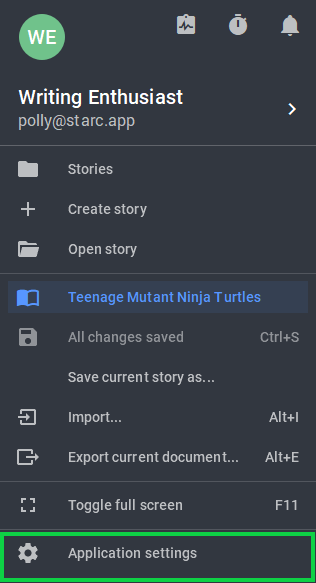
Scrolling down a bit, you can see the "Components" subheading and the customization window for each module. The first one is the text module, i.e. the type of document where you write conventionally unformatted text. Nevertheless, it can also be configured in one of 4 formats, which differ in font type (monospaced / sans serif) and page size (A4 / Letter).
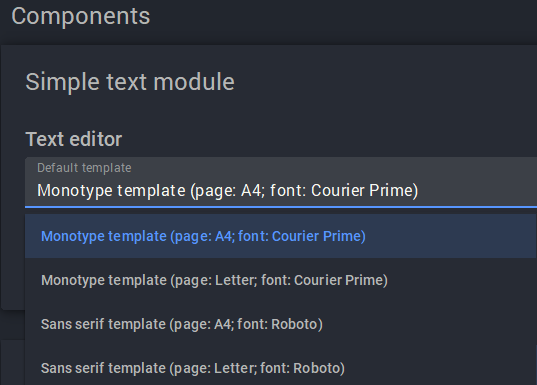
Right after the text module comes the script module – and this is where formatting templates are really important. There are as many as 8 of them. The most popular are the International A4 template and the American template with the Letter page format, where 1 page approximately corresponds to 1 minute of screen time. Also there is a Russian template on the list, and ones for Arabic, Hebrew, Tamil and Telugu languages.
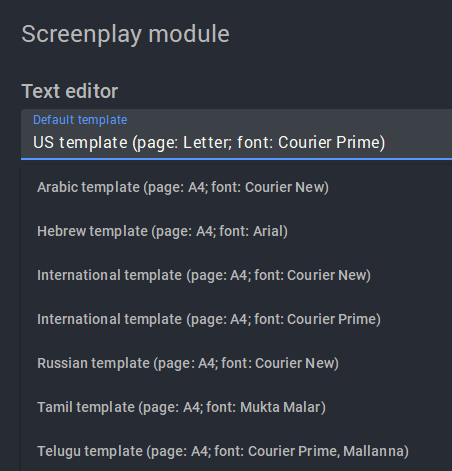
Next to the script there is the comics module. There are 4 template options here – 2 international and 2 American ones with different sheet formats, as well as with the arrangement of dialogues either line by line or in script form.
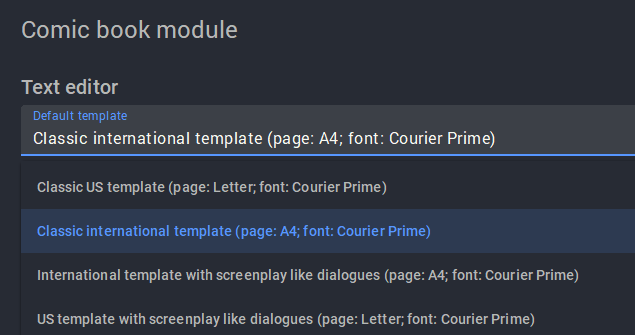
The next two modules – audio-drama and stage play – offer a BBC template with A4 sheet format and Arial font and an American template already familiar to us.
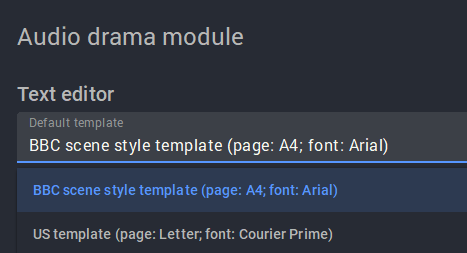
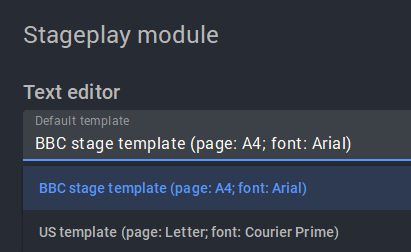
Finally, templates for the novel module. Here there are the same two options of page format and as many as 4 font alternatives.
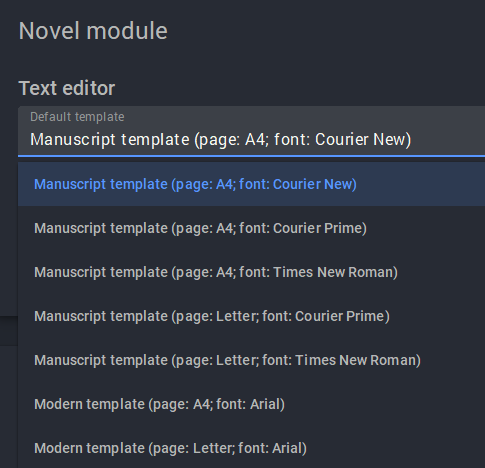
To set the desired template format, just select it in the drop-down list, and the settings will be automatically saved for both current projects and new ones.
We advise you to be attentive to templates, because different studios, publishers and contest sites require different text formatting. In Story Architect, formatting is done in seconds – the main thing is to make sure that you select exactly the one you need. You can also customize each format manually. Read the details here.